Publications (peer-reviewed or in peer review)

33. A.M. Langmüller, K.A. Chandrasekher, B.C. Haller, S.E. Champer, C.C. Murdock, P.W. Messer. (2024). Gaussian Process emulation for modeling dengue outbreak dynamics. medRxiv. https://doi.org/10.1101/2024.11.28.24318136

32. E.T. Chevy, J. Min, V. Caudill, S.E. Champer, B.C. Haller, C.T. Rehmann, C.C.R. Smith, S. Tittes, P.W. Messer, A.D. Kern, S. Ramachandran, P.L. Ralph. (2024). Population genetics meets ecology: a guide to individual-based simulations in continuous landscapes. bioRxiv. https://doi.org/10.1101/2024.07.24.604988

31. P. Xu, S. Liang, A. Hahn, V. Zhao, W.T. Lo, B.C. Haller, B. Sobkowiak, M.H. Chitwood, C. Colijn, T. Cohen, K.Y. Rhee, P.W. Messer, M.T. Wells, A.G. Clark, J. Kim. (2024). e3SIM: epidemiological-ecological-evolutionary simulation framework for genomic epidemiology. bioRxiv. https://doi.org/10.1101/2024.06.29.601123

30. A.P. Wilder, C.C. Steiner, S. Hendricks, B.C. Haller, C. Kim, M.L. Korody, O.A. Ryder. (2024). Genetic load and viability of a future restored northern white rhino population. Evolutionary Applications 17(4), e13683. https://doi.org/10.1111/eva.13683
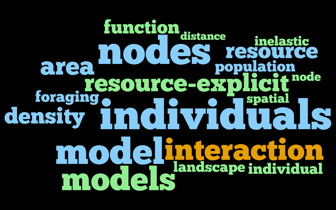
29. S.E. Champer, B. Chae, B.C. Haller, J. Champer, P.W. Messer. (2024). Resource-explicit interactions in spatial population models. Methods in Ecology and Evolution (00), 1–15. https://doi.org/10.1111/2041-210X.14432

28. B.A. Andersson, W. Zhao, B.C. Haller, Å. Brännström, X.-R. Wang. (2023). Inference of the distribution of fitness effects of mutations is affected by single nucleotide polymorphism filtering methods, sample size and population structure. Molecular Ecology Resources 27(7), 1589–1603. doi:10.1111/1755-0998.13825

27. B.C. Haller, P.W. Messer. (2023). SLiM 4: Multispecies eco-evolutionary modeling. The American Naturalist 201(5), E127–E139. doi:10.1086/723601

26. M.E. Lauterbur, M.I.A. Cavassim, A.L. Gladstein, G. Gower, N.S. Pope, G. Tsambos, J. Adrion, S. Belsare, A. Biddanda, V. Caudill, J. Cury, I. Echevarria, B.C. Haller, A.R. Hasan, X. Huang, L.N.M. Iasi, E. Noskova, J. Obšteter, V.A.C. Pavinato, A. Pearson, D. Peede, M.F. Perez, M.F. Rodrigues, C.C.R. Smith, J.P. Spence, A. Teterina, S. Tittes, P. Unneberg, J.M. Vazquez, R.K. Waples, A.W. Wohns, Y. Wong, F. Baumdicker, R.A. Cartwright, G. Gorjanc, R.N. Gutenkunst, J. Kelleher, A.D. Kern, A.P. Ragsdale, P.L. Ralph, D.R. Schrider, I. Gronau. (2023). Expanding the stdpopsim species catalog, and lessons learned for realistic genome simulations. eLife. doi:10.7554/eLife.84874.1

25. M. Petr, B.C. Haller, P.L. Ralph, F. Racimo. (2023). slendr: a framework for spatio-temporal population genomic simulations on geographic landscapes. Peer Community Journal 3, e121. doi:10.24072/pcjournal.354

24. B.C. Haller. (2022). Ten simple rules for reporting a bug. PLoS Computational Biology 18(10), e1010540. doi:10.1371/journal.pcbi.1010540

23. S.M. Schaal, B.C. Haller, K.E. Lotterhos. (2022). Inversion invasions: When the genetic basis of local adaptation is concentrated within inversions in the face of gene flow. Philosophical Transactions of the Royal Society B 377(1856). doi:10.1098/rstb.2021.0200
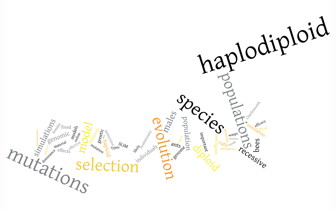
22. R. Pracana, R. Burns, R.L. Hammond, B.C. Haller, Y. Wurm. (2022). Individual-based modeling of genome evolution in haplodiploid organisms. Genome Biology and Evolution 14(5), evac062. doi:10.1093/gbe/evac062

21. E.S. Sorojsrisom, B.C. Haller, B.A. Ambrose, D.A.R. Eaton. (2022). Selection on the gametophyte: Modeling alternation of generations in plants. Applications in Plant Sciences 10(2), e11472. doi:10.1002/aps3.11472

20. Á.J. Láruson, M.C. Fitzpatrick, S.R. Keller, B.C. Haller, K.E. Lotterhos. (2022). Seeing the forest for the trees: Assessing genetic offset predictions from gradient forest. Evolutionary Applications 15(3), 403–416. doi:10.1111/eva.13354

19. M. Munasinghe, B.C. Haller, A.G. Clark. (2022). Migration restores hybrid incompatibility driven by mitochondrial–nuclear sexual conflict. Proceedings of the Royal Society B 289, 20212561. doi:10.1098/rspb.2021.2561
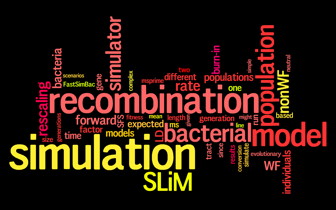
18. J. Cury, B.C. Haller, G. Achaz, F. Jay. (2022). Simulation of bacterial populations with SLiM. Peer Community Journal 2(2), e7. doi:10.24072/pcjournal.72

17. M.V. Matz, E.A. Treml, B.C. Haller. (2020). Estimating the potential for coral adaptation to global warming across the Indo-West Pacific. Global Change Biology 26(6), 3473–3481. doi:10.1111/gcb.15060

16. B.C. Haller, P.W. Messer. (2019). Evolutionary modeling in SLiM 3 for beginners. Molecular Biology and Evolution 36(5), 1101–1109. doi:10.1093/molbev/msy237
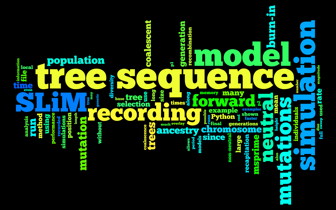
15. B.C. Haller, J. Galloway, J. Kelleher, P.W. Messer, P.L. Ralph. (2019). Tree-sequence recording in SLiM opens new horizons for forward-time simulation of whole genomes. Molecular Ecology Resources 19(2), 552–566. doi:10.1111/1755-0998.12968
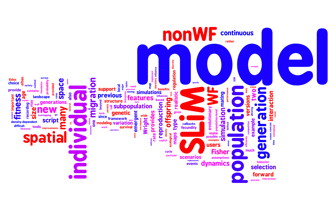
14. B.C. Haller, P.W. Messer. (2019). SLiM 3: Forward genetic simulations beyond the Wright–Fisher Model. Molecular Biology and Evolution 36(3), 632–637. doi:10.1093/molbev/msy228

13. B.C. Haller, P.W. Messer. (2017). asymptoticMK: A web-based tool for the asymptotic McDonald–Kreitman test. G3: Genes, Genomes, Genetics 7(5), 1569–1575. doi:10.1534/g3.117.039693

12. B.C. Haller, P.W. Messer. (2017). SLiM 2: Flexible, interactive forward genetic simulations. Molecular Biology and Evolution 34(1), 230–240. doi:10.1093/molbev/msw211

11. L.-M. Chevin, B.C. Haller. (2014). The temporal distribution of directional gradients under selection for an optimum. Evolution 68(12), 3381–3394. doi:10.1111/evo.12532
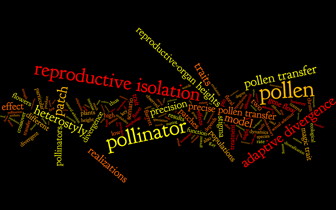
10. B.C. Haller, J.M. de Vos, B. Keller, A.P. Hendry, E. Conti. (2014). A tale of two morphs: Modeling pollen transfer, magic traits, and reproductive isolation in parapatry. PLoS ONE 9(9), e106512. doi:10.1371/journal.pone.0106512

9. B.C. Haller. (2014). Theoretical and empirical perspectives in ecology and evolution: A survey. BioScience 64(10), 907–916. doi:10.1093/biosci/biu131

8. M.D. Nowak, B.C. Haller, A.D. Yoder. (2014). The founding of Mauritian endemic coffee trees by a synchronous long-distance dispersal event. Journal of Evolutionary Biology 27(6), 1229–1239. doi:10.1111/jeb.12396

7. B.C. Haller, A.P. Hendry. (2013). Solving the paradox of stasis: Squashed stabilizing selection and the limits of detection. Evolution 68(2), 483–500. doi:10.1111/evo.12275

6. B.C. Haller, R. Mazzucco, U. Dieckmann. (2013). Evolutionary branching in complex landscapes. American Naturalist 182(4), E127–E141. doi:10.1086/671907
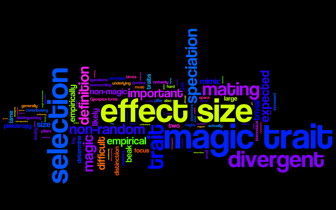
5. B.C. Haller, L.F. De Léon, G. Rolshausen, K.M. Gotanda, A.P. Hendry. (2012). Magic traits: distinguishing the important from the trivial [letter]. Trends in Ecology & Evolution 27(1), 4–5. doi:10.1016/j.tree.2011.09.005

4. M. Tum, M. Buchhorn, K.P. Günther, B.C. Haller. (2011). Validation of modelled forest biomass in Germany using BETHY/DLR. Geoscientific Model Development 4, 1019–1034. doi:10.5194/gmd-4-1019-2011

3. E. Crispo, J.-S. Moore, J. Lee-Yaw, S.M. Gray, B.C. Haller. (2011). Broken barriers: Human-induced changes to gene flow and introgression in animals. BioEssays 33(7), 508–518. doi:10.1002/bies.201000154

2. B.C. Haller, D. Chambers, R. Cheng, V. Chemistruck, T.F. Hom, Z. Li, J. Nguyen, A. Ichimura, D.J.R. Brook. (2015). Oxidation of electron donor-substituted verdazyls: Building blocks for molecular switches. Journal of Physical Chemistry A 119(43), 10750–10760. doi:10.1021/acs.jpca.5b09295

1. D.J.R. Brook, C.J. Richardson, B.C. Haller, M. Hundley, G.T. Yee. (2010). Strong ferromagnetic metal-ligand exchange in a nickel bis(3,5-dipyridylverdazyl) complex. Chemical Communications 46(35), 6590–6592. doi:10.1039/C0CC02233K

B.C. Haller. (2013). The role of heterogeneity in adaptation and speciation [Ph.D. thesis]. McGill University, Montreal, Quebec, Canada. 309 pp. URL.
Not peer-reviewed (books)

2. B.C. Haller, P.W. Messer. (2016–2024). SLiM: An Evolutionary Simulation Framework. 852 pp. URL.

1. B.C. Haller. (2016–2024). Eidos: A Simple Scripting Language. 130 pp. URL.
Not peer-reviewed (software)
2. B.C. Haller, P.W. Messer. (2016–2024). SLiM [version 4.2.1]. Home page: http://messerlab.org/slim/. GitHub repository: https://github.com/MesserLab/SLiM.
SLiM is a software framework for making forward genetic simulations. It uses the Eidos scripting language to provide highly flexible scriptability, and provides an interactive GUI environment called SLiMgui for simulation development and testing.
1. B.C. Haller. (2016–2024). Eidos [version 3.2.1]. Home page: http://benhaller.com/eidos.html. GitHub repository: https://github.com/MesserLab/SLiM.
Eidos is a general-purpose scripting language. It was developed for the SLiM project, but can be used in other contexts too. It is designed for tight scripting integration with application code, including exposing application objects directly as objects in script.
Not peer-reviewed (blog posts)
The Hendry lab at McGill hosts a blog about eco-evolutionary dynamics called eco-evo evo-eco. In addition, I have kept two blogs so far about science-related travel, one for a class I took in the Amazon, and one related to research collaborations in Europe, particularly my participation in the Young Scientists Summer Program at IIASA in Austria.
See those blogs for many more posts; I've put only the relatively science-focused posts here.
19. B.C. Haller. (2022). SLiM 4: Multispecies eco-evolutionary modeling (a personal history)
18. B.C. Haller [Ed.]. (2022). How to Write a Thesis
17. B.C. Haller. (2017). Simulating continuous space in SLiM 2
16. B.C. Haller. (2016). Flexible, interactive simulations: SLiM 2 published in MBE
15. B.C. Haller. (2016). Announcing SLiM 2.0: flexible, fast, interactive forward genetic simulations
14. B.C. Haller. (2014). The Divide: a survey about interactions between theoretical and empirical researchers
13. B.C. Haller. (2014). Coffee, long-distance dispersal, and self-incompatibility: Baker's Rule explored
12. B.C. Haller. (2013). Solving the paradox of stasis
11. B.C. Haller. (2013). Evolutionary branching in complex landscapes
10. B.C. Haller. (2013). Academic dispersal
9. B.C. Haller. (2012). Saunas & speciation
8. B.C. Haller, K.M. Gotanda, K. Oke, S. Muttalib. (2012). A biological refugium
7. B.C. Haller. (2012). Adaptation at the margins
6. B.C. Haller. (2011). Magic traits, muggle traits and squib traits
5. K.M. Gotanda, B.C. Haller. (2011). Conferences, meme-sex and some science for good measure...
4. B.C. Haller. (2011). Eco-evolutionary modeling north of the Arctic circle
3. B.C. Haller. (2010). Speciation 2010
2. B.C. Haller. (2010). How does evolution work?
1. B.C. Haller. (2008). Global climate and the Amazon
Not peer-reviewed (other)
2. B.C. Haller. (2012). Programming in R [workshop]. Biology Graduate Students Association, McGill University.
1. E. Meir, B.C. Haller. (1991). Fractal Mountain Climbing. MacTutor 7(5).